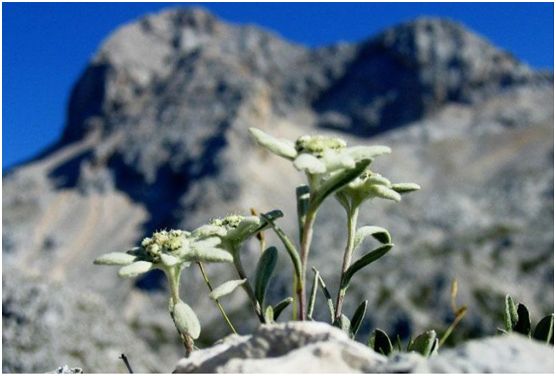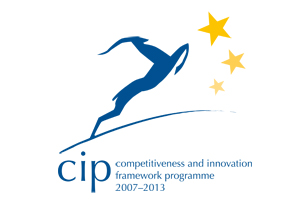Knowledge Networking Portal for Sustainable & Responsible Tourism










 Bohinj International Wildflower Festival (SI)
Bohinj International Wildflower Festival (SI)
| Contributor | Tina Hedi Zakonjsek |
|---|---|
| Country | Slovenia |
| Keywords |
|
| Release date | 09/07/2014 |
| Landscape type | Rural |
| Topics |
|
| GSTC Criteria for Destinations |
|
| Marketplace category |
|
| Type |
|
| # | File name | Contributor | Release date | Uploaded by | Upload date | Size | Content type |
|---|
|
Good Practice Innovation Sheet - Bohinj International Wild Flower Festival |
||||
|
|
||||
|
Items |
Description |
|||
|
1. WHO |
||||
|
Key people and organisations (initiator, leader, partners) |
organizer: Bohinj Tourist Board |
|||
|
co-organizer: Triglav National Park |
||||
|
partners: Municipality of Bohinj, Bohinj Tourist Association, local hotels and businesses, government agencies, international advisors, Slovene Tourism Board |
||||
|
Key Figures (Municipality of Bohinj) |
Surface |
Inhabitants |
Tourism arrivals |
Tourism nights |
|
333,7 km2 |
5,277 |
138.724 |
398.053 |
|
|
2. WHY |
||||
|
Reason for taking the good practice action |
Bohinj is a tourist resort faced with a problem of seasonality - short but busy summer season is followed by a winter season. This form of tourism has been found to be economically, socially and environmental unsustainable, with pressure to build and run large capacity hotels with seasonal staffing and much of the income generated being taken out of Bohinj. With current trends in global warming, even the winter tourism (ski) season is unreliable and varies in length. This has put pressure on increasing the summer capacity, but the Bohinj community has learned from past mistakes and has decided to develop a sustainable tourism strategy - to reduce seasonality by extending the visitor season into the quieter spring and autumn months and focus on a higher quality and lower volume tourism product linked to the outstanding environmental assets (nature, landscapes and culture) of the area. |
|||
|
Issues and challenge |
- to reduce seasonality |
|||
|
3. HOW |
||||
|
Methods /steps / tools used (to develop the good practice) |
|
|||
|
4. RESULT |
||||
|
Specific/measurable results, benefits |
Wild flowers continue to this day to play an important part in the local culture and there is a very strong desire amongst Bohinj people to promote and raise awareness of the unique natural and cultural heritage. It is mostly through their efforts that the first “Bohinj International Wild Flower Festival" took place in 2007. This nowadays annual two week event that takes place at the end of May and beginning of June celebrates the culture, nature and landscapes of Bohinj, an economically, socially and environmentally fragile area of Slovenia. The festival provides a range of events and activities for both local people and visitors who get to know the richness of the alpine wild flowers and the variety of habitats in Bohinj (e.g. meadows, hills, mountains, lakes and rivers). Programme encompasses a variety of events that include local craft market, photo-exhibitions, guided botanical tours (also on horseback), workshops with Slovene chefs, hay-cutting by hand, children's festival, environmental education workshops, illustrated lectures, concerts, traditional Slovene folk dances, best practices, workshops, photography tours... - 7 festivals organized, 8th starts on 24 May 2014 |
|||
|
Recognitions (e.g. awards) |
Finalist Sejalec 2011 - award for most innovative tourism achievements in Slovenia Wild Flower Europe - an international project that grew out of our festival. Nowadays annual wildflower festivals also take place in Bulgaria, Croatia, Romania, and Scotland. |
|||
|
5. REFLECTION |
||||
|
Lessons learned |
/ |
|||
|
Challenges met |
Visitor and local community requirements are not the same and it has been difficult organising events which fit in with the wide range of different behaviour patterns. For example, a lot of tourists arrive by public transport or through package groups and are dispersed throughout the area. This makes it difficult for some guests to get to local village events. The timing of events can also be crucial - early evening times which appeal to local people may well not be suitable for visitors because of the clash with the timings that hotels are serving dinner etc. The solution to both these issues has been relatively simple in that more events are held in more locations at different times to appeal to a wider range of people. Hotels are chosen as the venue for some events and activities to benefit from captive audiences. Local tourism organisations and some accommodation providers are also now offering to organise transport for their guests to events outside their immediate area. |
|||
|
Critical success factors |
It was mostly through active community efforts that the Festival Organisers became confident enough to promote their heritage more widely and hold the first ever “Bohinj International Wild Flower Festival” in 2007. However, the Festival would not work without local partnerships. It is the close involvement of local associations which adds colour and vitality to the wide range of activities held under the festival banner. Turizem Bohinj (as main organisers of the Festival) makes every effort to make sure no local group is excluded and the range of partnerships extends from local bee-keepers to arts and theatre groups, village women’s groups, children’s activity groups and local tourism business associations. Another remarkable feature of the Festival is the range of external partners involved, from the President of Slovenia (as Honorary Patron of the event) through Slovene Government agencies, The Triglav National Park, tourism businesses, to the main funders and supporters of the Festival, Bohinj Municipality and, of course, local village communities, farmers and local residents. |
|||
|
6. MORE |
||||
|
web-references, documents |
http://www.bohinj.si/alpskocvetje/eng/index.php http://wildflowereurope.org/ |
|||















































